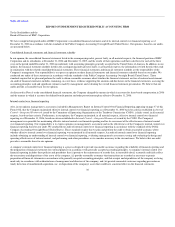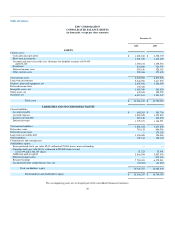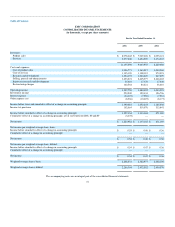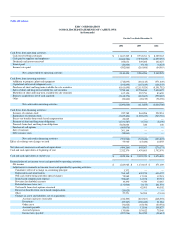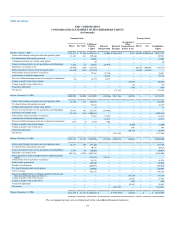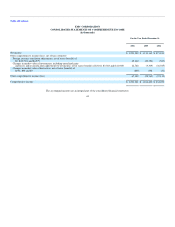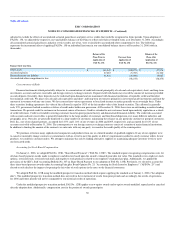EMC 2006 Annual Report Download - page 52
Download and view the complete annual report
Please find page 52 of the 2006 EMC annual report below. You can navigate through the pages in the report by either clicking on the pages listed below, or by using the keyword search tool below to find specific information within the annual report.
Table of Contents
EMC CORPORATION
NOTES TO CONSOLIDATED FINANCIAL STATEMENTS
A. Summary of Significant Accounting Policies
Company
EMC Corporation ("EMC") and its subsidiaries develop, deliver and support the Information Technology ("IT") industry's broadest range of
information infrastructure technologies and solutions that are designed to help individuals and organizations handle their digital information needs.
EMC's systems, software, and services support our customers' critical business processes by helping them build information infrastructures from the
most comprehensive systems available to store, manage and protect information at the right service levels and the right costs. We refer to this as an
information lifecycle management ("ILM") strategy. Our information management software and solutions empower our customers to capture, manage and
leverage structured and unstructured information – documents, images or emails – to support their business processes. Our virtual infrastructure software
helps organizations respond to changing IT requirements by dynamically altering their computing and storage environments with flexible virtualization
technologies. Our resource management software allows organizations to better understand, manage and automate the operation of their information
infrastructure.
Additionally, we also recently created an information security division to help customers systematically and comprehensively secure their information.
Through the company's recent acquisitions of RSA Security Inc. ("RSA") and Network Intelligence Corporation ("Network Intelligence") and our organic
development initiatives, this new division offers customers security solutions to assess the risk to their information; secure the people accessing information
and the infrastructure; protect the confidentiality and integrity of the information itself; and manage security information and events to assure effectiveness
and ease the burdens of compliance.
Accounting Principles
The financial statements and accompanying notes are prepared in accordance with accounting principles generally accepted in the United States of
America.
Principles of Consolidation
The consolidated financial statements include the accounts of EMC and its subsidiaries. All intercompany transactions and balances have been
eliminated.
Basis of Presentation
Certain reclassifications have been made to the prior years' financial statements to conform to the current year's presentation.
Use of Accounting Estimates
The preparation of financial statements in conformity with generally accepted accounting principles requires management to make estimates and
assumptions that affect the reported amounts of assets and liabilities, the reported amounts of revenues and expenses during the reporting period and the
disclosure of contingent assets and liabilities at the date of the financial statements. Actual results could differ from those estimates.
Revenue Recognition
We derive revenue from sales of information systems, software and services. We recognize revenue when persuasive evidence of an arrangement exists,
delivery has occurred, the sales price is fixed or determinable and collectibility is reasonably assured. This policy is applicable to all sales, including sales to
resellers and end users. The following summarizes the major terms of our contractual relationships with our customers and the manner in which we account
for sales transactions.
• Systems sales
Systems sales consist of the sale of hardware, including Symmetrix systems, CLARiiON systems and Celerra systems, Centera systems and Connectrix
systems. Revenue for hardware is generally recognized upon shipment.
• Software sales
Software sales consist of the sale of software application programs. Our software products provide customers with resource management, backup and
archiving, content management, information security and server virtualization capabilities. Revenue for software is generally recognized upon shipment or
electronic delivery. License revenue from royalty payments is recognized upon either receipt of royalty reports or payments from third parties.
45




